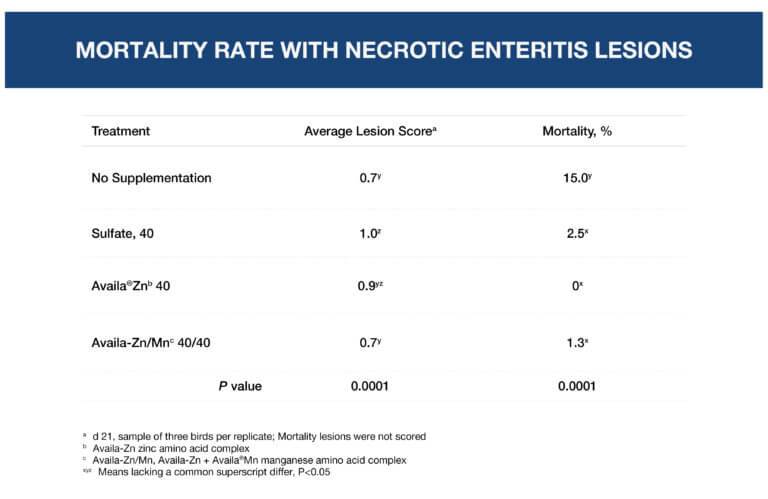Necrotic enteritis is one of the most common diseases in the poultry industry and can have a large negative impact on poultry operations. Subclinical cases can lead to slower growth, while clinical cases can cause a sharp increase in mortality, ultimately resulting in lower profits for poultry producers.
The disease occurs when predisposing agents such as coccidial protozoa cause lesions to the intestinal mucosa, disrupting the normal function of the gut and its microbial population. This creates the perfect environment for Clostridium perfringens to strive and bloom, creating characteristic necrosis of the intestinal epithelium.
Eimeria species can be found in every chicken house and in coccidiosis vaccines. For this reason, enteritis and necrotic enteritis are difficult infections to manage and require special attention, particularly in programs with reduced antibiotic usage.
Symptoms and Treatment Options for Necrotic Enteritis
At first, subclinical necrotic enteritis may be hard to spot in a flock. In many cases, it is not apparent that a flock is infected until there is a spike in mortality and/or after performing a routine necropsy.
With subclinical necrotic enteritis, the birds will exhibit slower growth rates due to lower feed efficiency, little by little, for several days before it’s noticed. This means more days for birds to get to market weight, or in less marketable weight in systems where birds are processed on a certain day. Either way, necrotic enteritis is robbing profitability.
The easiest clinical necrotic enteritis symptom to spot is an increase in mortality in the flock. If mortality reaches 2% or higher, the flock will need to be treated with an antibiotic to ensure the infection doesn’t spread to the rest of the flock. Other notable clinical signs include more apathetic, less active birds.
Once their flock has to be treated with an antibiotic in the feed, poultry producers raising birds in a no-antibiotics-ever system will need to shift the flock to a conventional production system, receiving a lower premium for that meat and again resulting in reduced profits.
Manage Coccidiosis, Manage Necrotic Enteritis
Necrotic enteritis management is directly correlated with the management of coccidiosis.
For example, administering a coccidiosis vaccine on day 1 will cause it to cycle early and allow the birds to slowly build an immunity to it while their immune system is not very reactive. This gives them a chance to recover and return to normal growth rates before processing.
If birds contract coccidiosis later in life, their immune system will be more reactive, and necrotic enteritis will have more of an impact on their growth, ultimately not allowing enough time to recover before they go to market.
Performance Trace Minerals for a Rapid, Robust Immune Response
Zinc, manganese and copper from Zinpro Performance Minerals® help defend birds from necrotic enteritis from the very beginning by helping birds mount a rapid and robust immune response and regulating inflammation caused by necrotic enteritis. By improving gut health, performance trace minerals help reduce Clostridium perfringens that permeate the gut.
Research shows that birds receiving a Clostridium perfringens challenge supplemented with zinc from Availa® Zn and manganese from Availa® Mn had less severe lesions scores and lower mortality rates, as well as increased weight gain and better feed conversion rates, compared with birds that received no supplementation or received inorganic trace minerals.

To learn more about including performance trace minerals from Zinpro Performance Minerals in your poultry nutrition program to help manage coccidiosis and necrotic enteritis, contact your Zinpro representative today.

